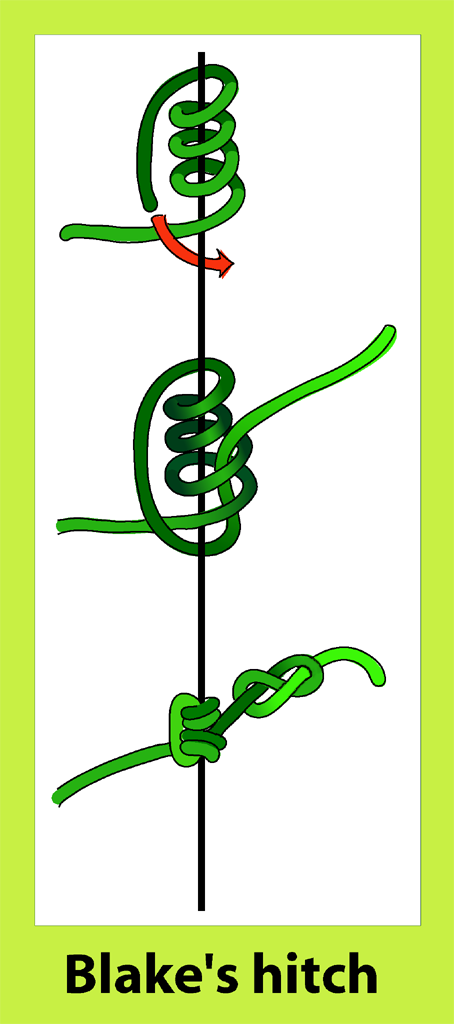Knotorious
That Guy With The Face
The other original names for the Blake's hitch are the "ProhGrip" or "Prohaska hitch."I just found out recently from Don Blair that he actually named the Blake's Hitch for Jason. Apparently, he was talking to Jason Blake when Blake first started climbing on the hitch (which Blake had learned from someone else). He was telling Don how he was going to make a VHS tape of how to tie and climb on the hitch (which you can find online) but couldn't think of a good name.
He suggested something to Don, which was way too long, and Don said that people would forget that name in 5 minutes and he should just call it the Blake's Hitch. Jason took his advice, and the rest is history.
Dr. John Ball took a poll of tree climbers recently, and he said that the majority of tree workers (I believe he said 80 percent) still use the Blake's Hitch, which they consider an advanced way of tying a hitch! So, so much for the Blakes Hitch being old-school!?
I wonder what the "revolutionary" SRT/SRS climbers would think of that, knowing that they are a minority? I do consider myself primary an SRT climber (I hate the SRS acronym), but I did learn on the taut line, before switching to the Blakes and then the VT.
@Brocky just looked at the instructions and they show another hitch.
Is this the Catalan or Arbsession hitch ?
The video shows how to tie the Arbsession hitch. However, the point @Brocky is making (I believe), and based off of making a quick examination of the tying methods for each hitch myself a few moments ago, the Catalan is tied exactly the same way. Two differently named hitches, same tying method, with the Arbsession being the original (it was, I believe, first called the "tr33climb3r," and created by Casey Seldens, who changed the name to promote his arborist supply store).







